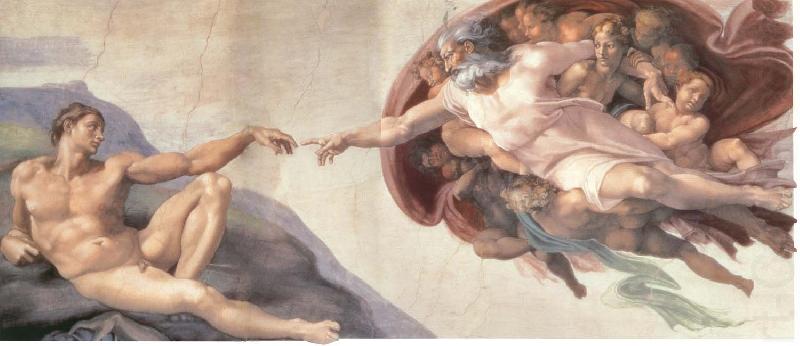What are the major differences or similarities between the ethos of the creation story or stories you are familiar with and the story King tells in The Truth About Stories ?

The creation story detailed by King in The Truth About Stories is different from the creation story I was raised with in two distinct ways. To give a short background on my own creation story history, I was raised with the “traditionally” Western Judeo-Christian “Adam and Eve eat some unspecified fruit, become painfully aware of their own nakedness and humanity, get banned from Eden and essentially ruin perfection for the rest of us and the rest of time, blah blah blah” story that’s drilled into us over and over throughout popular culture.
The first major difference I see between the two stories is the presence of animals within King’s narrative. Though the Western creation story has the infamous serpent and some other animals in the garden of Eden, the focus is solely on Adam and Eve and their realization of their own humanity/their original sin. In King’s story, the animals all play different parts, and the story does not focus on any human characters, but balances them with the animal characters, not placing one on a pedestal above the other.
I think this is especially interesting given how each culture views the relationship between humans and nature–Western culture dictates that nature owes humanity, placing mankind at the centre of the Earth’s needs and using and abusing natural resources to further ourselves; Aboriginal culture (in general) more peacefully co-exists with the natural world.
The second major difference I see between the two stories is the presence of shame and sin, or the lack thereof. In Western creation stories, sin and shame are the two fundamental emotions/themes behind human creation: Eve sinned when she ate the fruit from the Garden of Eden, condemning us all as sinners. Eve and Adam are ashamed of their nakedness, and are banned from the Garden of Eden, which makes the reader feel ashamed about their own humanity. This vicious, shaming element is absent from King’s story, which personally made me more open to his message, instead of feeling trapped in believing in the biblical creation story for threat of shame as the Judeo-Christian creation story I grew up with tended to do.
Ultimately, due to my own cultural upbringing and inherent bias, it was difficult to read King’s story and digest it as a creation myth and not just any other magical story because of how ingrained into popular culture the Western creation story is, as well as how ingrained it is into my own religious background. Reading King’s story was a great way to begin opening my eyes to a different perspective, as well as a way to critically look at the flaws present in the stories I grew up with and now consider to be second nature.
WORKS CITED
Michaelangelo. Creation of Adam. 1512. Paint. Sistine Chapel, http://www.italianrenaissance.org/michelangelo-creation-of-adam/.
Sowa, Cora Angier. “Ancient Myths in Modern Movies.” Weblog post. Ancient Myths in Modern Movies. Minerva Systems, n.d. Web. 03 July 2015.
